Umar Hayat Mahal, Chiniot’s cursed mansion
“Do you believe in ghosts?” whispered the caretaker, as he led me into another cavernous room. I was still pondering how to answer the question when he fired the next one at me. “Have you heard about Kolkata?” Truth be told, I wasn’t going to answer any of these questions; the gaunt, slender man was intent on deluging me with trivia in an apparent attempt t0 strike some kind of wonder into my mind. It was one of those moments where less would definitely have been more; instead of all the white noise, Umar Hayat Mahal in Chiniot would have been effectively eerie in silence.
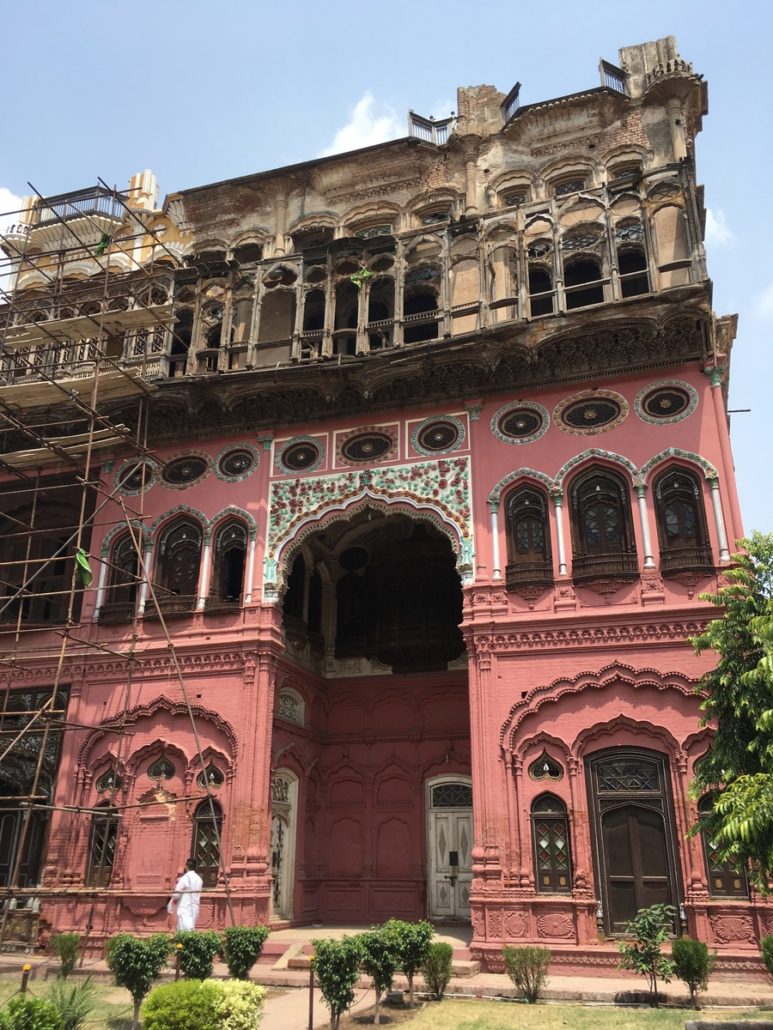
I can’t really blame the caretaker – they don’t see many travellers, either foreign or local, in these parts. He was understandably excited, and not exactly overworked. Chiniot is hardly a major destination on Pakistan’s meagre tourist trail. But here I was – it was the middle of summer, and the sun was so intense it seemed to suck the oxygen out of the air. Umar Hayat Mahal was our plan to escape the oppressive heat of the Chenab River’s floodplains.
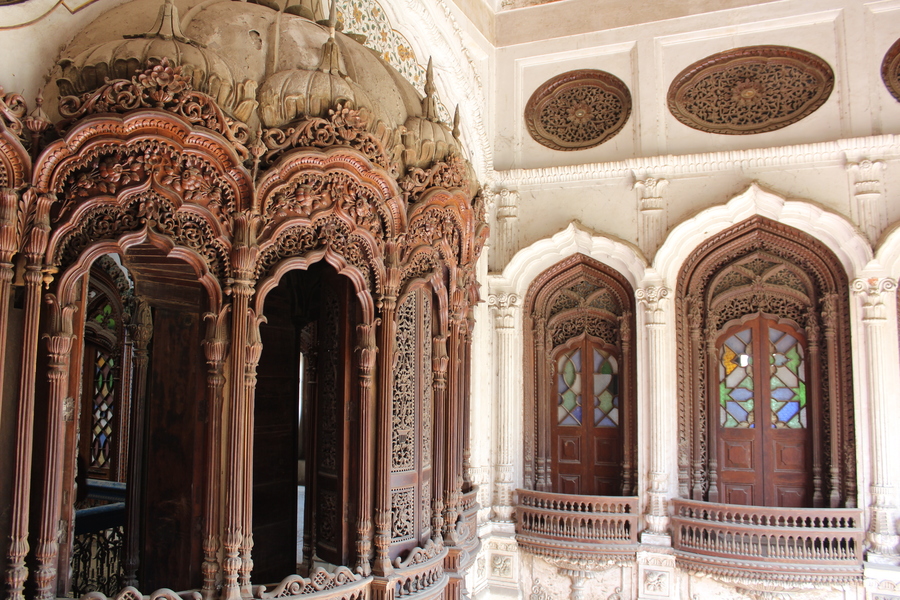
We pulled up outside the five storey haveli-style mansion in Chiniot’s small inner city. Painted in pink and cream, resplendent with its sandstone arches and exposed wooden beams, and beset by a tended grassy yard, the mansion sticks out in Chiniot’s gaggle of furniture shops and mechanic businesses.
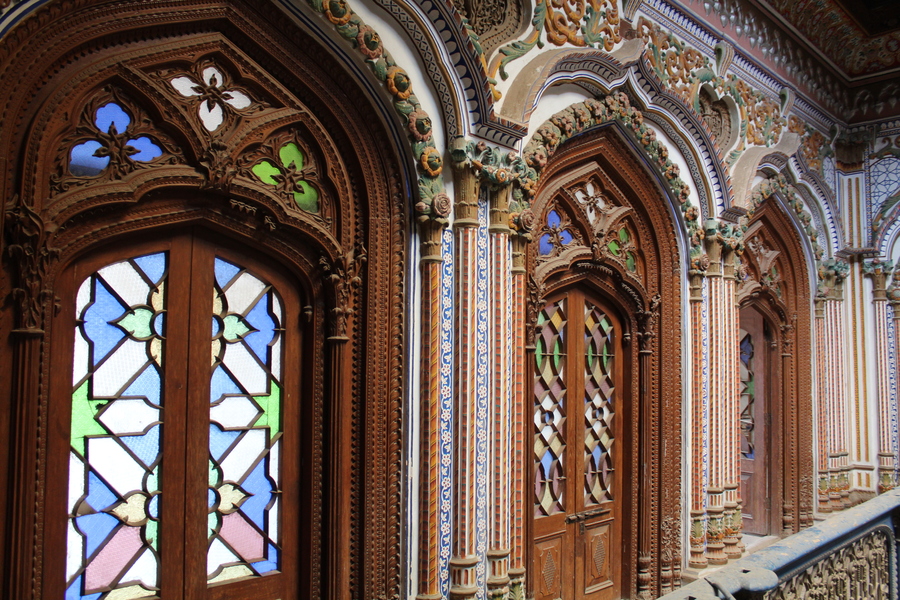
In the early 20th century Sheikh Umar Hayat fled Chiniot after marrying against his family’s wishes. In 1923, after building a successful career as a trader in Kolkata (Calcutta) British India, Hayat decided to construct a lavish palace in the town of his birth. It was a defiant statement to the society that had shunned him, a story of a once-ostracised boy who became a powerful man. Artisans, artists and builders were contracted from various parts of the subcontinent, and the construction began almost at once. Soon the mansion towered above the rest of the semi-rural city, costing a reported Rs. 400,000, an astronomical figure at the time. The construction was a no-expense-spared example of the type that one only dreams of today – it was a palace fit for a king.
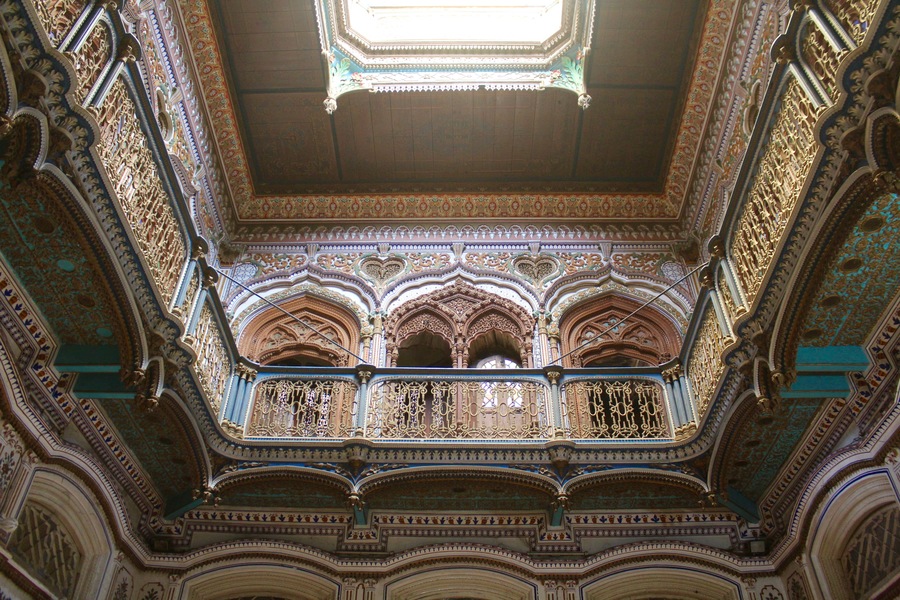
In 1935 the palace was nearing completion when Sheikh Umar Hayat suddenly passed away, leaving his grieving wife and his 15 year old son, Gulzar Muhammad, to tend for the palatial residence.
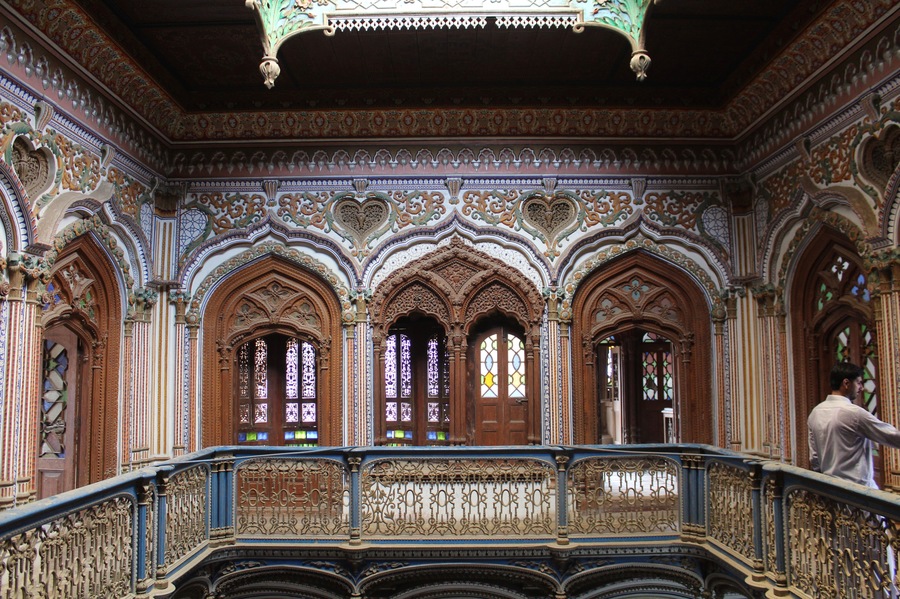
Three years later Gulzar was at marriageable age, so his mother arranged the wedding at the palace. Everyone in Chiniot was invited, and the mammoth ceremony was to be spoken about for years to come. The next morning, Gulzar was found dead in the mansion. Within weeks his mother, having lost both her husband and her son in the space of three years, died in the throes of grief.
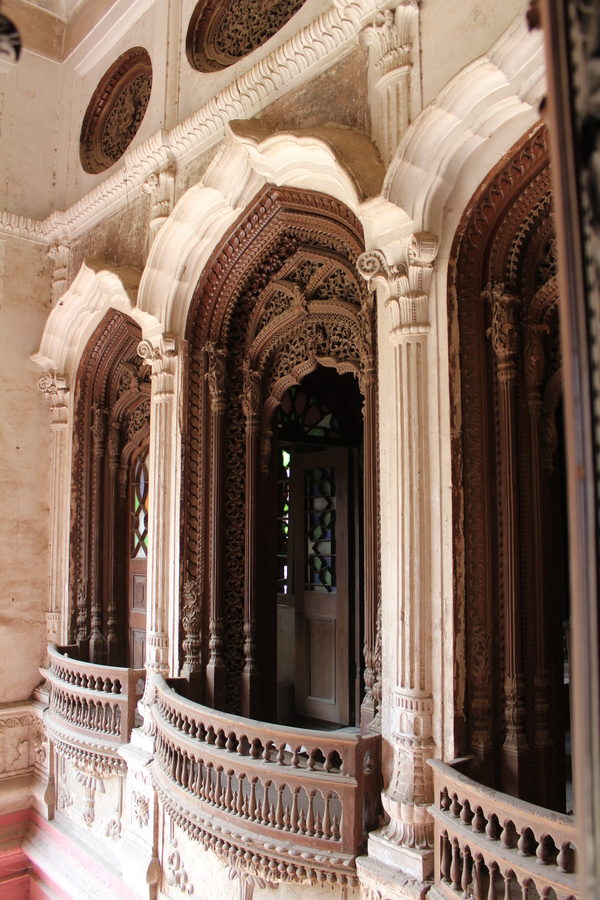
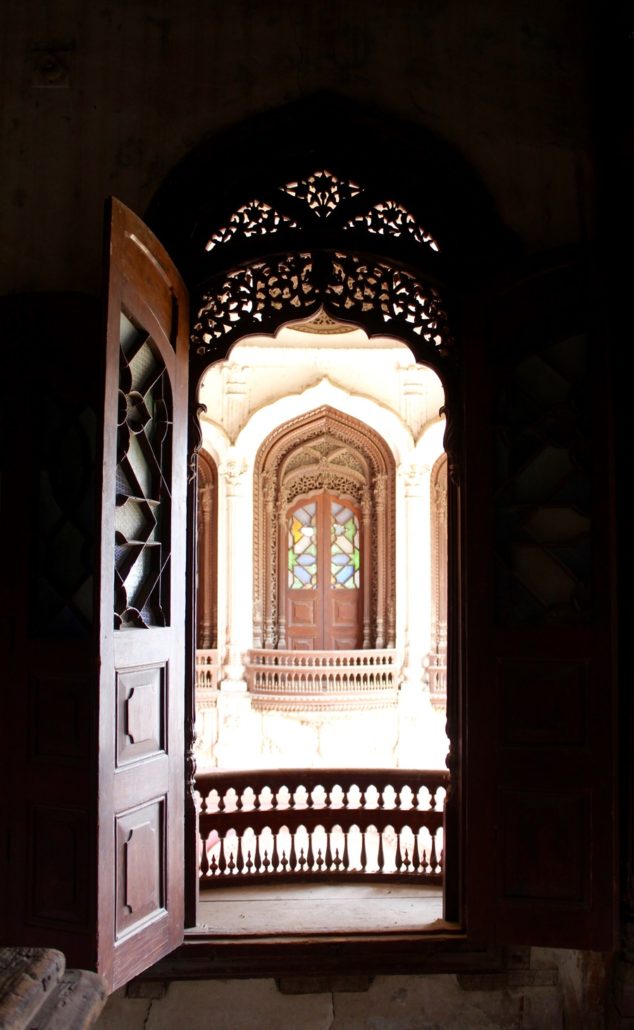
Spooked, the surviving members of the Hayat family abandoned the building, believing it to be cursed. The building changed hands between a religious school to an orphanage, before finally being left to the elements in 1950. It wasn’t until 1989 that the local government took over the building, and by the mid-1990s it had been converted into a library.
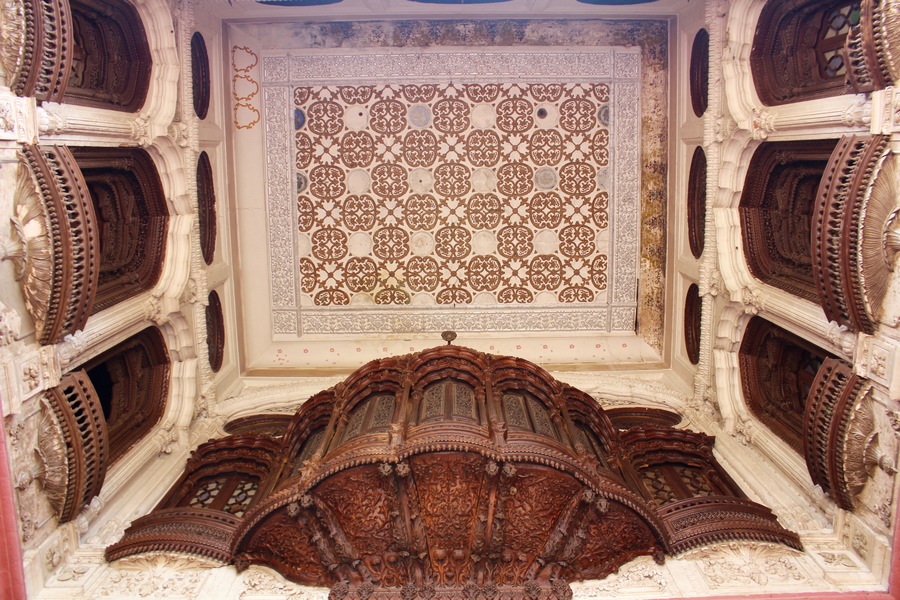
Roof structure at Umar Hayat Mahal
However the library occupies only a small part of the ground floor of the building, and much of the rest of the building is still eerily quiet. The intricately colourful mosaics still plaster the walls and the exposed wooden beans have been preserved by the ideal dry climate.
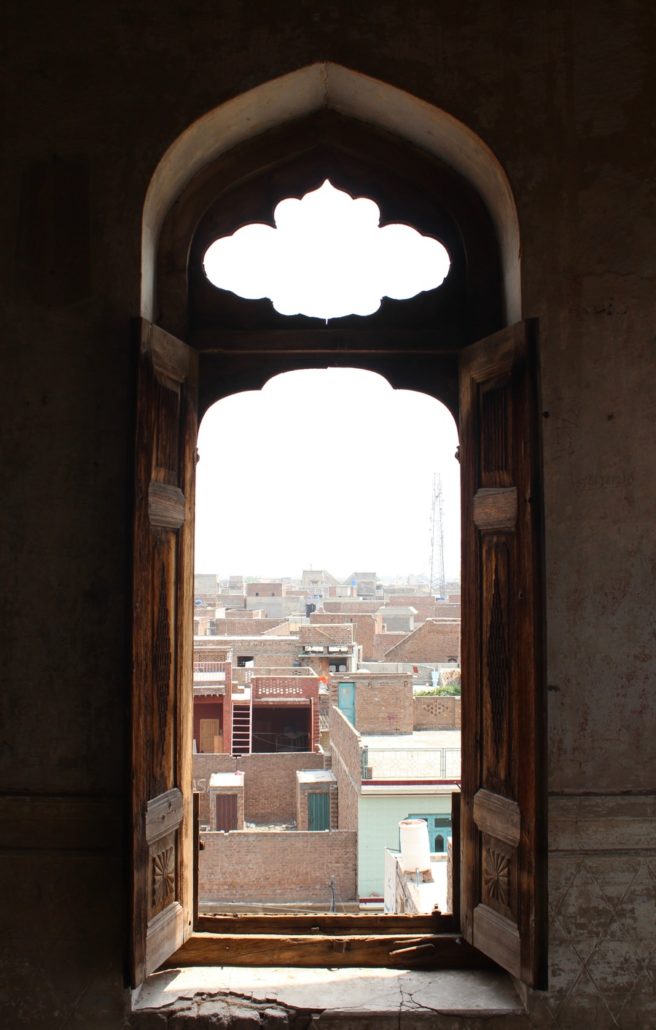
The windows are long since gone, but their carved architraves continue to frame the semi-desert city outside. The fourth and fifth floors have crumbled, but the few surviving pillars point to a lost grandeur.
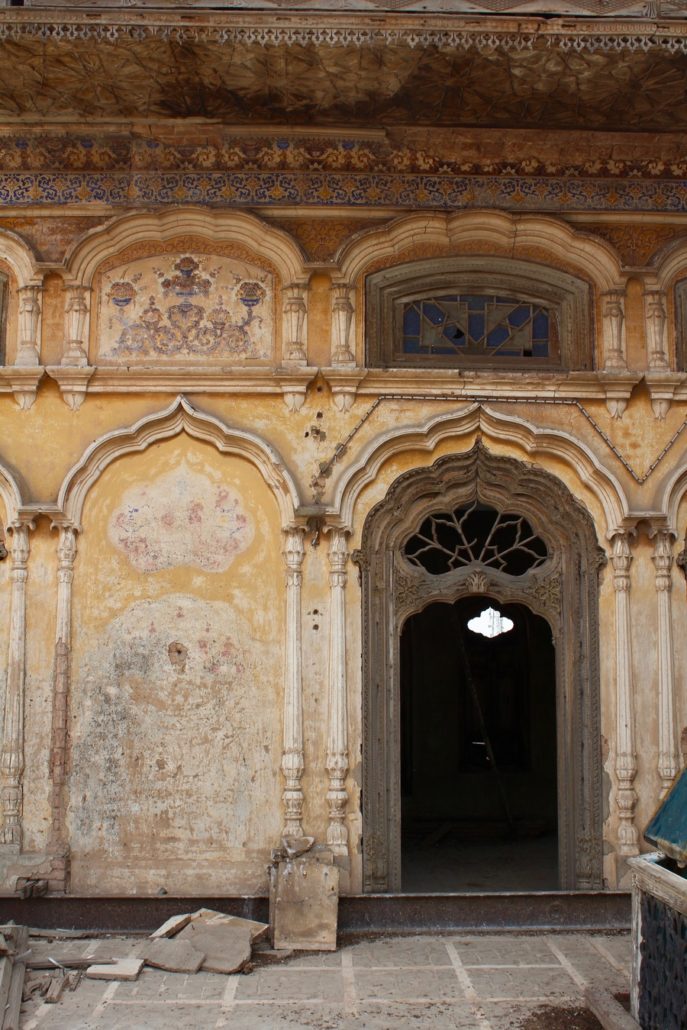
The wind still swirls through the corridors of this once glorious house, and carries the dust into every little crevasse. And then I wonder – do I believe in ghosts?

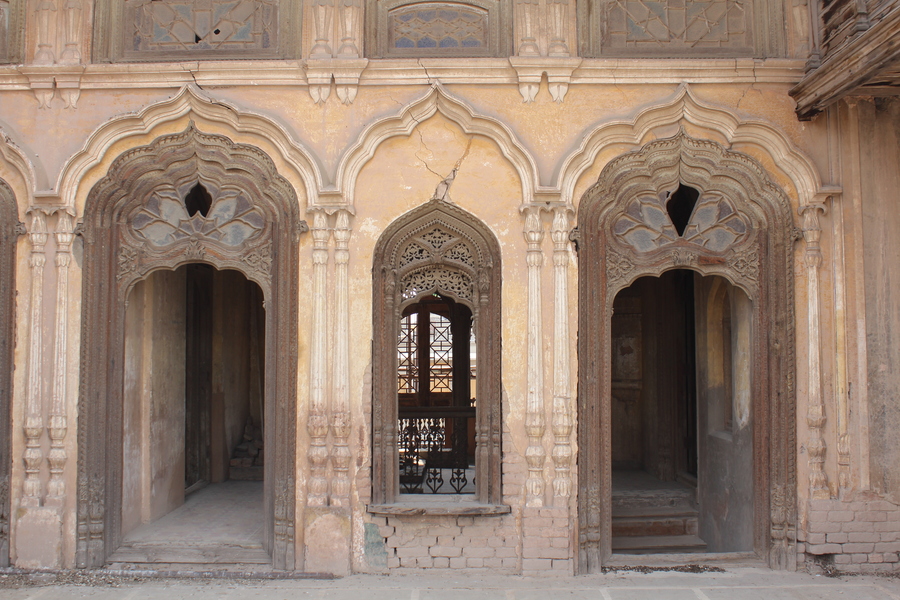




oh I would LOVE to visit this place. it looks amazing and indeed very creepy. Gives me an idea about something I can post on too which is always nice 😉 – An abandoned town in Japan. Great piece Tim!
Thanks Andy! Looking forward to reading your piece too 🙂